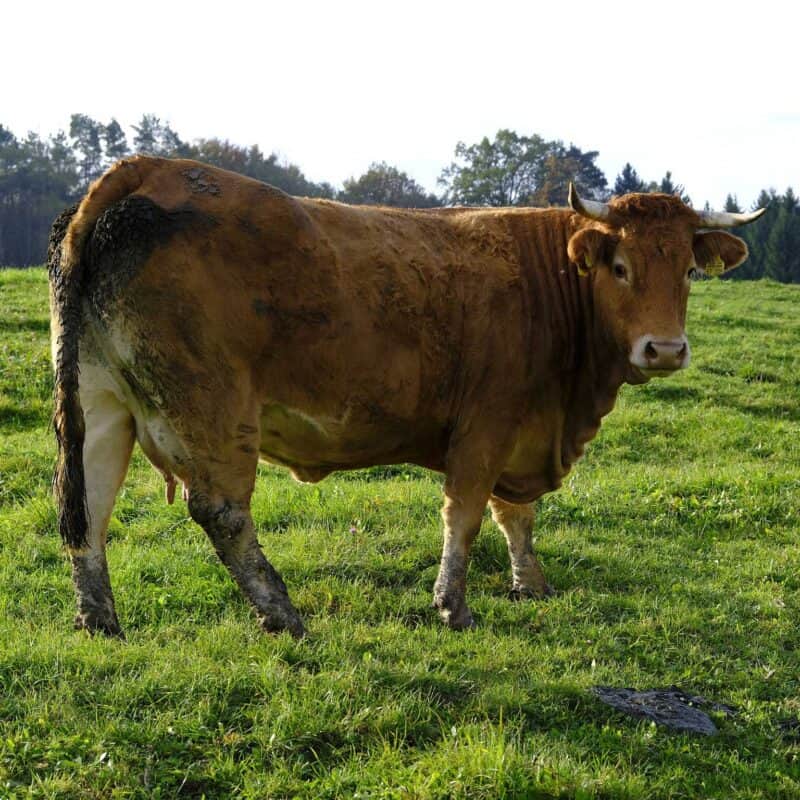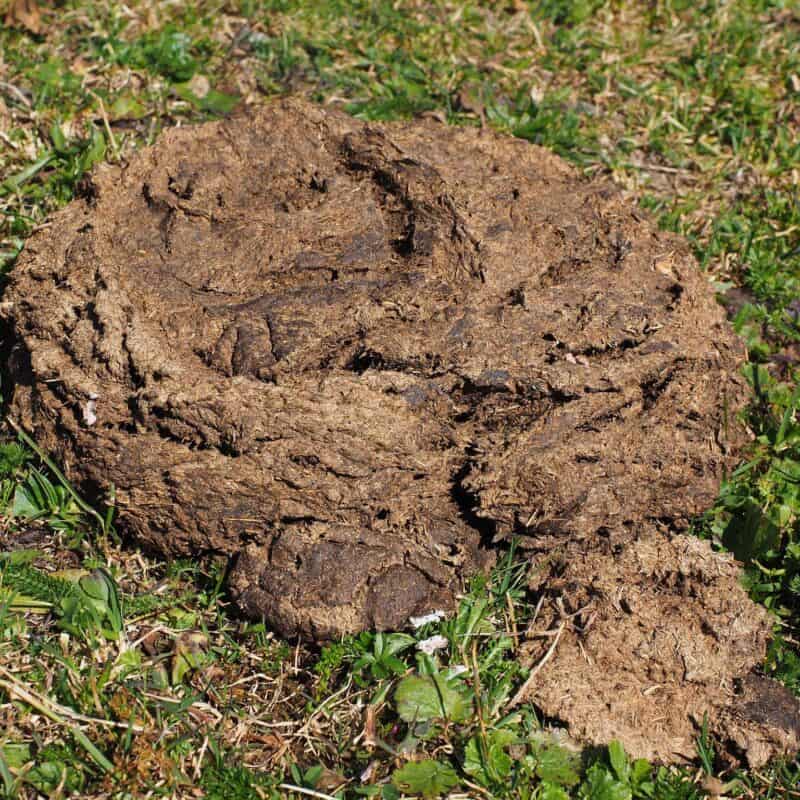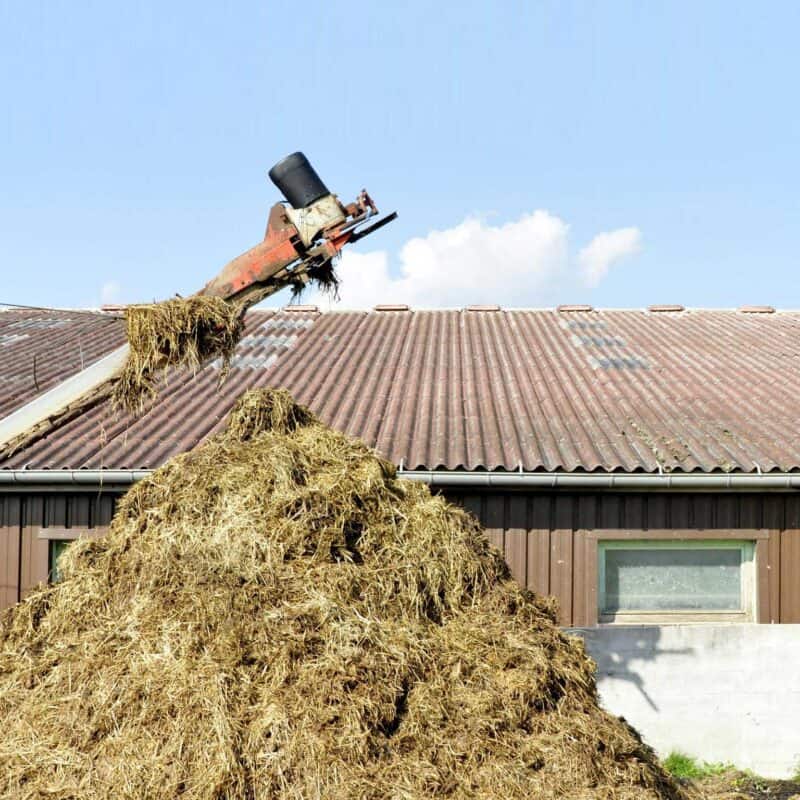Dung is a dirty word for many, but it can actually be quite useful!
From fertilizing your garden to keeping away pesky insects, cow dung has a lot of amazing applications.

If you’re ever at a loss for what to do with this smelly substance, check out the list below for some inspiration. Who knew cow poop could be so handy?
What is Cow Dung?
First and foremost – what are we talking about when we talk about cow dung?
It might be unpleasant – perhaps not the best dinner table talk! – but cow dung is just cow poop. Cow feces. Cow manure. Whatever you want to call it!
It’s a combination of water, indigestible plant matter, and other substances that are released from the cow’s intestines.
Despite sounding rather unpleasant, cow dung has a variety of uses in the home and garden. If you raise cows, it is both plentiful and renewable – so make sure you don’t waste it!
Especially compared to other types of manure, cow dung has a soft texture. It’s usually deposited in a round, circular shape. That’s why you’ll hear cow dung referred to as cow pats or cow pies.
Cow manure isn’t just useful for us – it’s also essential for all kinds of living things. Among Them? Dung beetles. These beetles aerate and fertilize the soil, helping to prevent manure from being washed away by rainwater to contaminated waterways.
Dung also provides great food for earthworms!
Why Cow Manure?
You can get manure – ok, poop! – from any animal. So why bother with cows?
When you’re looking for sources of manure, especially for sources of manure that you will use as a fertilizer for your garden, you need to make sure that manure comes from an animal that eats plants (or mostly plants).
Chickens, horses, and cows are all popular choices. Cow manure is even safer than chicken manure because cows are fully herbivorous (chickens are omnivores).
It is also lower in nitrogen, making it more versatile in the garden. Cow manure is easier to find than chicken or horse manure and it’s available in larger quantities.
Cows are larger animals that poop more – so there’s more to go around! Plus, these animals are raised all over the United States.

9 Amazing Uses for Cow Dung
Here are some of the best uses for cow dung. Though some are more common and easier to implement than others, you’ll be amazed at everything you can do with this renewable resource.
1. Fertilizer
The most obvious way to use cow dung is as fertilizer.
When used correctly, cow dung is a rich fertilizer. In the soil, it supports all kinds of microbes, plants, and even animals. It’s an important host for dung beetles and the Pilobolus fungus.
Pilobolus is a fungus that grows only on herbivorous dung, such as the manure of cows. It can’t make its own food and must absorb nutrients from its surroundings.
Removing cow manure from barns and fields to use it as a fertilizer is common. It is rich in minerals such as phosphorus, potassium, and nitrogen. When added to the soil, it can encourage the growth of beneficial microorganisms.
Like other types of animal manure, cow dung can improve the structure and texture of the soil. If your soil is too sandy or has too much clay, adding cow dung can help to rectify the issue.
That said, it’s a good idea to not apply cow manure immediately to the field but instead to wait a while before crops are planted. That way, you can ensure that it’s not too rich in certain chemicals and nutrients.
2. Fuel and Biomass
Cow dung is also an important source of fuel. Although making biomass fuel from cow dung isn’t common in the United States, in other countries, the manure is frequently collected and dried for fuel. Sometimes it is mixed with some straw.
Then, the combination can be lit to provide heat. It can also provide a cooking flame. While that sounds unpleasant, it’s important to remember that cow dung loses its offensive odor when it’s fully dried.
Like I said, using cow patties for biofuel isn’t as common in the United States. However, this is growing in popularity as scientists work on ways to make biogas from dung. Biogas is just a mixture of gasses that are produced by anaerobically digested manure by bacteria.
These biogases are made out of cow dung but can also be made from things like plant material, food waste, and sewage. There’s a technological device known as a digester that converts the manure to gas and then allows it to be used as fuel.
3. Building Material
Cow dung can also be used as a building material.
Again, this isn’t common in the United States. However, in some parts of the world – like in Kenya’s Masai Mara and in India – people living in rural areas regularly use a paste of mud and cow dung to form the floors and walls of their homes.
It forms a waterproof layer that insulates the house, keeping it warm while also preventing heat entry during the hotter months. Again, since it’s dried, it does not smell.
In a slightly more modernized take on this technique, some people make bricks from cow dung and straw dust.
There’s a growing movement in developed countries to make fiberboard with manure residue, rather than the traditional sawdust. In this technique, the manure would be sterilized and then mixed with a bit of resin to form the board.
Fiberboard is a valuable resource that is used to make floors and furniture, but it can be expensive to produce.
4. Papermaking
You can even make paper from cow dung! The manure needs to be washed so the fibers can be extracted but they can then be pressed into paper on a screen.
You can do this as a hobby. You can also buy this kind of paper online if you want a more eco-friendly alternative.
5. Insect Repellent
This next use for cow dung might sound odd when you consider how flies like to hang around a cow’s back end!
However, when cow dung is burned, it can be highly effective at warding off all kinds of insect pests – including mosquitoes. When you burn cow dung, the smoke will keep insects away for hours.
6. Insulator
I already mentioned that cow dung works well as a building material. It can also be used for insulation.
7. Disinfectant – Maybe
In some cultures, cow dung is regularly applied to the floor. This is done to insulate it, as mentioned above, but there is also a belief that cow dung can serve as a disinfectant. There are beneficial microbes in cow dung that might help ward off unwanted pathogens.
That said, this is one you’d need to try with caution. Sterilized cow manure can contain microbes that can make humans sick, too. You don’t want raw cow dung to come into contact with an open wound or your food.
8. Fun and Games
Believe it or not, cow manure can also be used as a source of entertainment! Especially in rural areas, cow contests are about as fun as they get.
One example? A cow chip throwing contest. People throw dried cow patties as far as they can. Whoever throws it the farthest wins. Simple enough.
Cow pie bingo is another popular game. In this, squares are drawn in chalk on the grass. Each square is marked with a number and everyone pays for a square.
The cows are led to the grass, and the winner is the person who “owns” the square where the cow leaves behind his dung first. Gross, but certainly an interesting spectator sport!
9. Composting Cow Dung
Many people put cow dung directly on their gardens and fields as a fertilizer, but you can also compost it. The high ammonia content in the dung can burn plants if fresh manure is applied directly.
Made up of digested grain and grass, cow manure is high in nitrogen along with potassium and phosphorus. It can also contain ammonia, as I just mentioned, and pathogens that can make humans sick.
Cow dung can also contain weed seeds. Composting the manure will kill both the pathogens and the weeds while retaining the helpful nutrients.
By adding composted cow manure to the garden you’ll improve the soil’s ability to hold moisture. You won’t have to water as often. Plus, the compost can improve aeration and help break up compaction.
After composting the cow manure, you can use it as a top dressing or mix it right into the soil. There are a few ways you can compost – hot composting and vermicomposting.
You can even add cow manure to a lasagna garden, in which you’ll layer fresh manure with other carbon-dense materials so that everything breaks down and composts right in your garden.
When you compost the cow dung, consider mixing it with lighter materials like hay or straw. You can also add ash or lime to balance out the pH.
You’ll need a relatively large compost pile to compost cow manure, but not too big. You need to make sure the pile is large enough to produce heat but not so large that it doesn’t get enough air.

Where to Get Cow Dung
If you raise your own cows, you probably already have a pretty solid idea of where to get cow dung. Just follow your girls around for a bit!
However, if you don’t have a farm that raises cows, you’ll need to buy it.
If you know someone who raises cattle, there’s a good chance that they have far more manure than they know what to do with. They’ll be happy to have you take it off their hands, especially if you’re willing to scoop it up and pick it up from the farm (rather than having them deliver it to you).
Some farmers also process the droppings themselves and sell it.
Worst case scenario, you can always buy cow dung from a retailer. Most home and garden stores sell cow dung that you can use, among other things, as fertilizer for your garden. Believe it or not, there are even some health and wellness stores that sell cow dung.
Although the jury is definitely still out on this one, some people believe in applying cow dung to their skin to use it to improve blood circulation. It can supposedly alleviate and prevent acne and pimples on the skin, too, since it has antibacterial properties.
I’ll probably wait a hot second to try that one! I think I need more research first.
Tips for Handling Cow Dung
If you want to try out any of the ideas listed above to get rid of your cow’s…er…droppings, you’re welcome to it! It’s an ample resource that offers a variety of resources.
However, there are a few safety precautions you should take.
For one, always wear gloves when you handle dung of any kind. Don’t let it get into your mouth or any open wounds as it could make you sick.
If you decide you want to try to make your own miniature anaerobic digester, be careful doing so. Follow the assembly instructions for the unit you purchase very carefully, since digesters can be dangerous. Biogas contains methane – and methane is a flammable gas.
If you’ve purchased cow dung that you plan to use in your garden – and you didn’t raise the cows yourself- make sure you ask about whether the cows were treated with any medications. The chemicals can make their way into cow dung so it’s important to be aware of this.
Cow Dung: The Proof is in the Poop
So there you have it! The most practical (and best) uses for cow dung on the homestead.
Cow dung is a powerful and underutilized resource. By following these tips, you can make the most of this valuable material. Have you tried any of these methods? Let us know in the comments!


Rebekah is a high-school English teacher n New York, where she lives on a 22 acre homestead. She raises and grows chickens, bees, and veggies such as zucchini (among other things).

If getting cow manure (or almost any manure) from an outside source, be sure to verify that their grazing or hay fields were not treated with certain broad-leaf herbicides (“Grazon” is one brand name). These apparently can be spread, the grass/hay eaten and digested, and the manure composted–and the herbicide is still active. Put it on a garden or around a fruit tree, and you may find everything gets sickly and/or dies. No one seems to know how long-lasting it really is.
Other than that–yes, give any manure (plus plant wastes) enough time, moisture, and mass to heat up properly, and it’s *all* good! Read “The Humanure Handbook.” Great stuff. Especially with fertilizer prices skyrocketing.